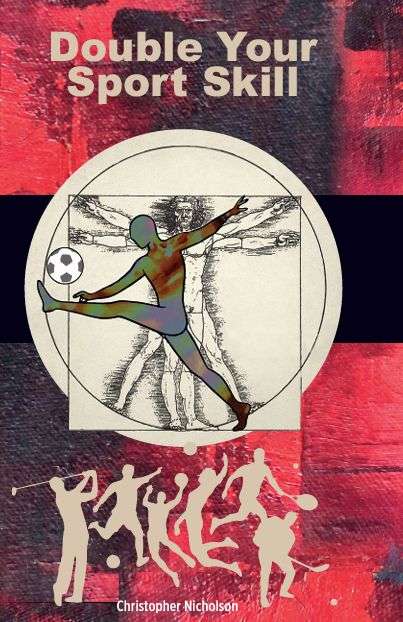
Double Your Sport Skill by Christopher Nicholson
Check my rate
| Main centres: | 1-3 business days |
| Regional areas: | 3-4 business days |
| Remote areas: | 3-5 business days |

| Main centres: | 1-3 business days |
| Regional areas: | 3-4 business days |
| Remote areas: | 3-5 business days |
What do tennis great Rafa Nadal, ice hockey star Gordie Howe, soccer god Pelé, Patrick Mahomes II, NFL quarterback for the Kansas City Chiefs, basketball hero Kobe Bryant, rugby star Johnny Wilkinson, and cricket legend Kane Williamson have in common? How have they achieved their greatness? Natural ability, of course, and serious practice have all contributed: but they have a different dimension. They are all ambidextrous or kick with either foot. We could add to that list, Major League baseball pitcher, Pat Venditte of the Miami Marlins, who regularly pitches with both arms.
From earliest times philosophers such as Plato have advocated ambidexterity and one incredibly advanced culture, some two thousand years ago, the Scythians, practiced equal skill with the limbs on a national scale. It is very improbable that Leonardo da Vinci and Michelangelo played much sport, let alone cricket, rugby, American football or baseball. These two artists lived during the Renaissance period and produced works of incomparable beauty. What is interesting is that both were ambidextrous in that they could use either hand with equal facility.
The British author Charles Reade wrote an article in 1878 and said that every child is ambidextrous until some grown fool interferes. Men and women are symmetrical beings and yet, for many years, skill for the purposes of sport has been concentrated in the right hand. There are fascinating reasons for the predominant use of the right hand, arising from prehistoric hunting practices of our distant ancestors.
The above-mentioned dominance in the right hand and side has led to a development of the left hemisphere of the brain to the detriment of the right hemisphere. The left brain concentrates on linear thinking and can be juxtaposed to the right brain, which embraces artistry and holistic, conceptual thinking. The failure to use the left hand has diminished our ability to deal creatively with problems in sport, much to our detriment. The advantages of ambidexterity lie, therefore, not merely in the mechanical acquisition of two skilful hands, but in the increase in creativity and brain skill as well.
Many argue that sidedness, be it right or left, is determined at birth and should not be tampered with. In fact, the very opposite is the case as was established by a fascinating study conducted in 1943 by an academic in South Africa. She conducted an interesting experiment with two groups of eight-year-old schoolchildren and designed exercises in which they used their non-dominant hands. She was surprised by the fact that it was not only their skill, power and posture that improved; their academic results also improved by up to seven percent.
The theory can be used by coaches, as well as parents of young sports enthusiasts, and may simply be of interest to sports fans. As legendary cricket coach Bob Woolmer says,
[I]t is possible that parents and coaches will in future begin to train both hands for co-ordination and strength, with potentially revolutionary results: a generation of ambidextrous cricketers.